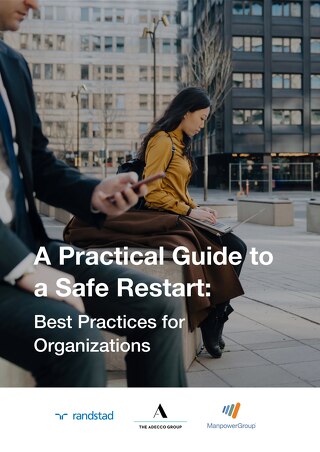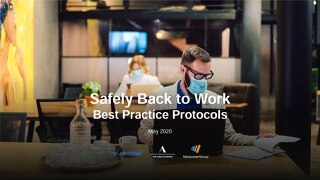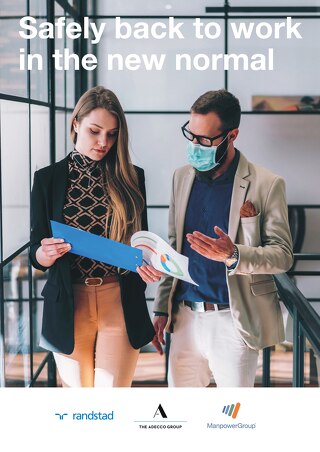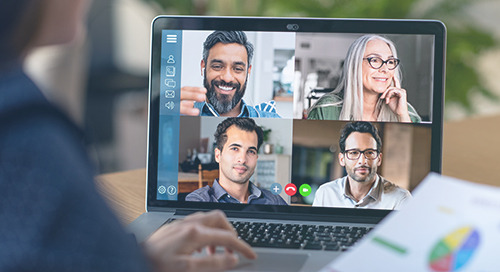How Do We Know When to Restart?
April 16, 2020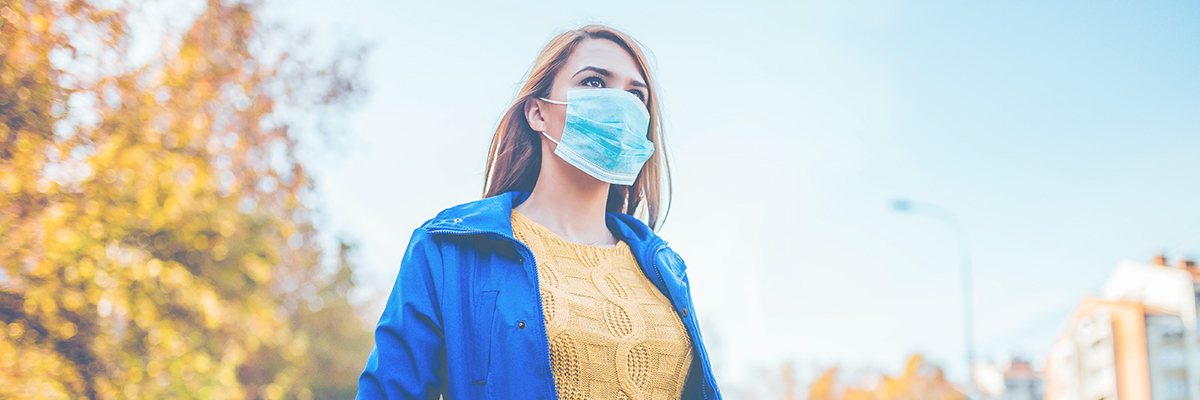 Global Best Practices for Getting Back to Work: #SmartRestart #PeopleFirst
As countries around the world begin to relax lockdowns, lift restrictions and plan for a return to some kind of new normal, it’s refreshing to be looking ahead to restarting our economies and reopening our workplaces. Already there are lessons to be learned from early waves from South Korea and Singapore, and now the Nordics, Spain, Italy and others planning how to ease thousands of workers safely back to work in the coming weeks. While we scrutinize the impact of this health crisis on GDP, digest the reams of data and look ahead to formulate scenarios to minimize damage to our economies and businesses, it’s imperative we remember this crisis is all about people – about how people behave, how people react and how they respond in times of crisis.
The question we should be asking is not how speedy, how soon or how stringent a lockdown or lifting of restrictions should be; more, how do we encourage individuals to act on the information available and change their behavior accordingly? For example, while restaurants remain open in Sweden, business is down 80% - because adherence to public advice is incredibly high. The focus on not alarming the population yet creating the culture and conditions that encourage people to take the right steps is one of the most important determiners of how we will emerge from this crisis.
Employers have a significant role to play with 3.3bn people at work every day. When we talk about how to reopen the economy, understanding that customers and employees want to feel reassured requires data and insight to build trust and instill confidence for a strong, smart restart. As a global organization operating across more than 75 countries, here’s what we can learn from those countries first impacted, first emerging:
Testing, tracing and technology is key.
Just as tech bridged the way almost overnight to remote working, it will also help bridge society back to reopening. Data is strengthening our response to the pandemic and the fast deployment of contact-tracing and self-diagnosis apps are helping containment. In Singapore, a contact-tracing app that requires users to opt-in and share data, is already proving that many prefer the confidence of knowing and minimizing health risks. It also helps ensuring individuals at risk follow the quarantine rules. Widespread availability of testing is critical too. Spain may prove to be one of the hardest hit countries in Europe, yet this week a partial release of lockdown allowed 300 000 workers who couldn’t do their jobs remotely return safely to work thanks to distribution of over one million testing kits, and 10 million masks provided at subway stations. What we can also be confident of: people will not return to productive employment if it’s perceived as a risk to their health and to the health of their loved ones.
Communication, Communication, Communication.
Openness and honesty remains key, and it works both ways. The best employers are carrying out pulse surveys, asking people what works for them, what they expect from their employer and how they can do more to help. Others - like airlines – are asking customers what will make them feel comfortable to fly again. In South Korea, the government launched a campaign to educate people that testing at a national scale was key to containment. They established a call center to keep people informed, introduced an app to assist self-diagnosis and tracing, and wearing masks in public was universally adopted. Clear communication focused on data and insight has undoubtedly saved lives and allowed people to work safely and confidently.
We cannot simply flip the switch.
We cannot go from ‘off’ to ‘on’ with the current situation. There will be no universal return date for all. Countries ahead of the curve are orchestrating a phased approach to prioritizing health and containment. Employers must provide clear guidance so people understand the rationale around returning. Gatherings at work and outside will be controlled. Workers who can work remote will likely stay home. Shifts will be staggered to allow for physical distancing, deep cleaning will happen between shifts and protective materials will be available to workers. Temperature-taking and virus-testing will continue in order to contain the virus, reduce anxiety around inevitable, controlled flare-ups and heighten worker confidence.
Partnerships and collaboration count.
Reopening the economy will require large-scale cooperation and alliances -- public and private, international and domestic. That’s why we are proud to join together with HR Industry Leaders and call for employers, trade unions, and NGOs to join us, too. We know this collaborative model works. Countries around the world are beginning to minimize disruption with a collective will to defeat the virus. In South Korea the public and private sectors are coming together quickly and efficiently, seamlessly merging data to identify new cases and isolate their spread, resulting in raised awareness and socially responsible behavior.
Acknowledge we will return to the future, not the past.
Now is the time to embrace a shared vision of tomorrow. The sudden transformation of how we do business is going to have a lasting effect. Some of these changes are closer to what workers wanted all along. For years we’ve heard the growing chorus of calls for more flexibility, for remote working. Trust is now being required of both sides - to balance wellbeing, productivity and independence. And for those who remained on the job – the essential workers who have served us in hospitals, grocery stores and delivery centers – their service must remain valued and rightly rewarded long after the shut-down ends.
Work is something that largely defines the human experience. If we remain strong, resilient and well-positioned to support our colleagues, customers and communities we can all be safely back to work - however that manifests itself in the next normal. Employers must be a part of the solution and put the wellbeing of their people at the heart of what they do, protect lives and livelihoods. After all, we’re all in this together.
This article is also published on Linkedin.
Global Best Practices for Getting Back to Work: #SmartRestart #PeopleFirst
As countries around the world begin to relax lockdowns, lift restrictions and plan for a return to some kind of new normal, it’s refreshing to be looking ahead to restarting our economies and reopening our workplaces. Already there are lessons to be learned from early waves from South Korea and Singapore, and now the Nordics, Spain, Italy and others planning how to ease thousands of workers safely back to work in the coming weeks. While we scrutinize the impact of this health crisis on GDP, digest the reams of data and look ahead to formulate scenarios to minimize damage to our economies and businesses, it’s imperative we remember this crisis is all about people – about how people behave, how people react and how they respond in times of crisis.
The question we should be asking is not how speedy, how soon or how stringent a lockdown or lifting of restrictions should be; more, how do we encourage individuals to act on the information available and change their behavior accordingly? For example, while restaurants remain open in Sweden, business is down 80% - because adherence to public advice is incredibly high. The focus on not alarming the population yet creating the culture and conditions that encourage people to take the right steps is one of the most important determiners of how we will emerge from this crisis.
Employers have a significant role to play with 3.3bn people at work every day. When we talk about how to reopen the economy, understanding that customers and employees want to feel reassured requires data and insight to build trust and instill confidence for a strong, smart restart. As a global organization operating across more than 75 countries, here’s what we can learn from those countries first impacted, first emerging:
Testing, tracing and technology is key.
Just as tech bridged the way almost overnight to remote working, it will also help bridge society back to reopening. Data is strengthening our response to the pandemic and the fast deployment of contact-tracing and self-diagnosis apps are helping containment. In Singapore, a contact-tracing app that requires users to opt-in and share data, is already proving that many prefer the confidence of knowing and minimizing health risks. It also helps ensuring individuals at risk follow the quarantine rules. Widespread availability of testing is critical too. Spain may prove to be one of the hardest hit countries in Europe, yet this week a partial release of lockdown allowed 300 000 workers who couldn’t do their jobs remotely return safely to work thanks to distribution of over one million testing kits, and 10 million masks provided at subway stations. What we can also be confident of: people will not return to productive employment if it’s perceived as a risk to their health and to the health of their loved ones.
Communication, Communication, Communication.
Openness and honesty remains key, and it works both ways. The best employers are carrying out pulse surveys, asking people what works for them, what they expect from their employer and how they can do more to help. Others - like airlines – are asking customers what will make them feel comfortable to fly again. In South Korea, the government launched a campaign to educate people that testing at a national scale was key to containment. They established a call center to keep people informed, introduced an app to assist self-diagnosis and tracing, and wearing masks in public was universally adopted. Clear communication focused on data and insight has undoubtedly saved lives and allowed people to work safely and confidently.
We cannot simply flip the switch.
We cannot go from ‘off’ to ‘on’ with the current situation. There will be no universal return date for all. Countries ahead of the curve are orchestrating a phased approach to prioritizing health and containment. Employers must provide clear guidance so people understand the rationale around returning. Gatherings at work and outside will be controlled. Workers who can work remote will likely stay home. Shifts will be staggered to allow for physical distancing, deep cleaning will happen between shifts and protective materials will be available to workers. Temperature-taking and virus-testing will continue in order to contain the virus, reduce anxiety around inevitable, controlled flare-ups and heighten worker confidence.
Partnerships and collaboration count.
Reopening the economy will require large-scale cooperation and alliances -- public and private, international and domestic. That’s why we are proud to join together with HR Industry Leaders and call for employers, trade unions, and NGOs to join us, too. We know this collaborative model works. Countries around the world are beginning to minimize disruption with a collective will to defeat the virus. In South Korea the public and private sectors are coming together quickly and efficiently, seamlessly merging data to identify new cases and isolate their spread, resulting in raised awareness and socially responsible behavior.
Acknowledge we will return to the future, not the past.
Now is the time to embrace a shared vision of tomorrow. The sudden transformation of how we do business is going to have a lasting effect. Some of these changes are closer to what workers wanted all along. For years we’ve heard the growing chorus of calls for more flexibility, for remote working. Trust is now being required of both sides - to balance wellbeing, productivity and independence. And for those who remained on the job – the essential workers who have served us in hospitals, grocery stores and delivery centers – their service must remain valued and rightly rewarded long after the shut-down ends.
Work is something that largely defines the human experience. If we remain strong, resilient and well-positioned to support our colleagues, customers and communities we can all be safely back to work - however that manifests itself in the next normal. Employers must be a part of the solution and put the wellbeing of their people at the heart of what they do, protect lives and livelihoods. After all, we’re all in this together.
This article is also published on Linkedin.


